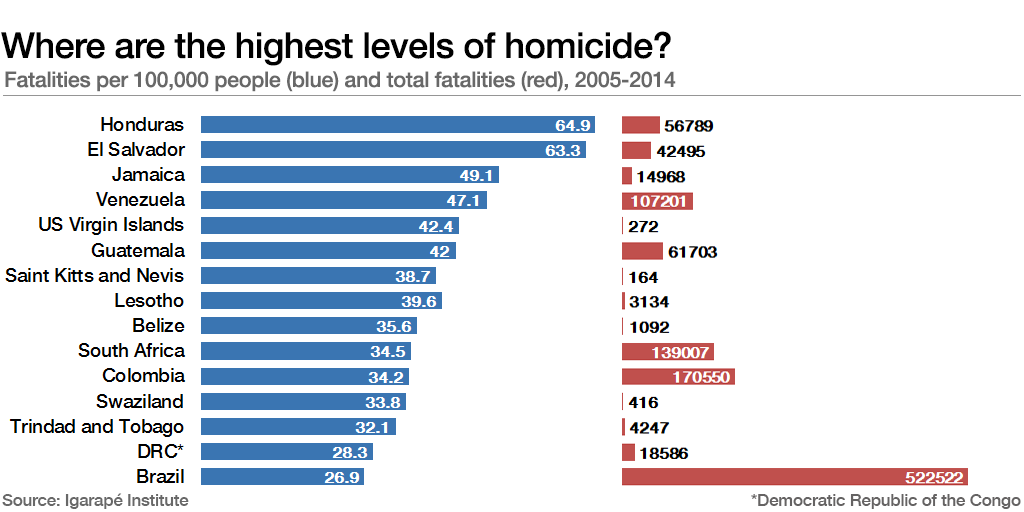Corruption in Latin America is skyrocketing. Here's why that’s good news

Image: REUTERS/Nacho Doce
Stay up to date:
Latin America
It’s been a challenging couple of years for the international community. A stagnant global economy, tumbling commodity prices, rising populism, ongoing conflicts.
But when Latin American leaders were asked to name the biggest challenge in their region for 2015, the majority of them pointed to something else: corruption.
“Corruption has long been regarded as a significant problem for Latin America – perhaps the most significant of all,” a Forum report on the topic noted.
A year later, has any progress been made?

From bad to worse?
Judging by the headlines, you’d be tempted to say no. In fact, you’d be forgiven for thinking things have got worse.
In Brazil, the Petrobras scandal – described as “one of the most astonishing corruption schemes ever to be uncovered” – culminated in March with calls to impeach President Dilma Rousseff and her predecessor Luiz Inacio da Silva.
Many other leaders have been embroiled in the crisis, which saw politicians taking kickbacks in exchange for state contracts. By the time it came to light, $5 billion had been lost to corruption.
Elsewhere in the region, Chilean President Michelle Bachelet’s popularity took a big hit after her family was involved in a high-profile corruption scandal. More recently, Argentina’s former president, Cristina Fernández de Kirchner, was indicted for meddling with the country’s central bank. And in Guatemala, former president Otto Perez Molina will stand trial for allegedly masterminding a scheme under which bribes were paid to customs officials.
A long history of corruption
Of course, none of this is new to the region. As the Economist wrote in a special report on the issue, “resistance to corruption in Latin America has a long and largely futile history”.
Every year, when Transparency International releases its Corruption Perception Index, Latin American countries consistently appear towards the bottom. And it’s a scourge that affects large proportions of the population – as many as 30% of people in some countries.
Perhaps that’s why until now, people in the region have turned a blind eye. “Latin Americans have historically tended to be tolerant of pilfering politicians,” writes Luis Alberto Moreno of the Inter-American Development Bank.

Saying no to corruption
But change is coming. “An anti-corruption wave seems to be sweeping across the region,” CNN reported recently.
In fact, for many analysts familiar with the issue, the latest round of corruption scandals is actually evidence that Latin America is starting to get on top of the problem. That’s what Nick Miroff, writing in the Washington Post, argues. “In countries where democratic institutions have grown stronger, a more independent judiciary and the political activism of an internet-powered citizenry are challenging the old way of doing business by graft. It looks like hard-fought progress.”
Corruption was in the past tolerated because many thought it helped everything run smoothly. “Rouba, mas faz” – he steals, but he gets stuff done – was often said by Brazilians when referring to their politicians.
Now people are starting to see corruption for what it is: a poison that spreads to other parts of society, with sometimes devastating effects. There is perhaps no more infamous example of this than the 43 students who went missing in Mexico’s Guerrero state. While it’s still not clear what happened to them, it was almost certainly the work of corrupt local officials and gangs.
Indeed, as analysts at Insight Crime have pointed out, it’s no coincidence that some of the region’s most corrupt countries – Honduras, Venezuela, Guatemala – are also among the most violent places in the world.

The wake-up call seems to be starting to have a positive impact in the region. In this year’s Corruption Perception Index, 17 Latin American countries improved their rankings compared to the year before. Slow progress, but all in the right direction.
Have you read?
Accept our marketing cookies to access this content.
These cookies are currently disabled in your browser.
Don't miss any update on this topic
Create a free account and access your personalized content collection with our latest publications and analyses.
License and Republishing
World Economic Forum articles may be republished in accordance with the Creative Commons Attribution-NonCommercial-NoDerivatives 4.0 International Public License, and in accordance with our Terms of Use.
The views expressed in this article are those of the author alone and not the World Economic Forum.
Forum Stories newsletter
Bringing you weekly curated insights and analysis on the global issues that matter.
More on Geo-Economics and PoliticsSee all
Vijay Eswaran
July 7, 2025
John Letzing
July 3, 2025
Abdulla bin Adel Fakhro
June 30, 2025






